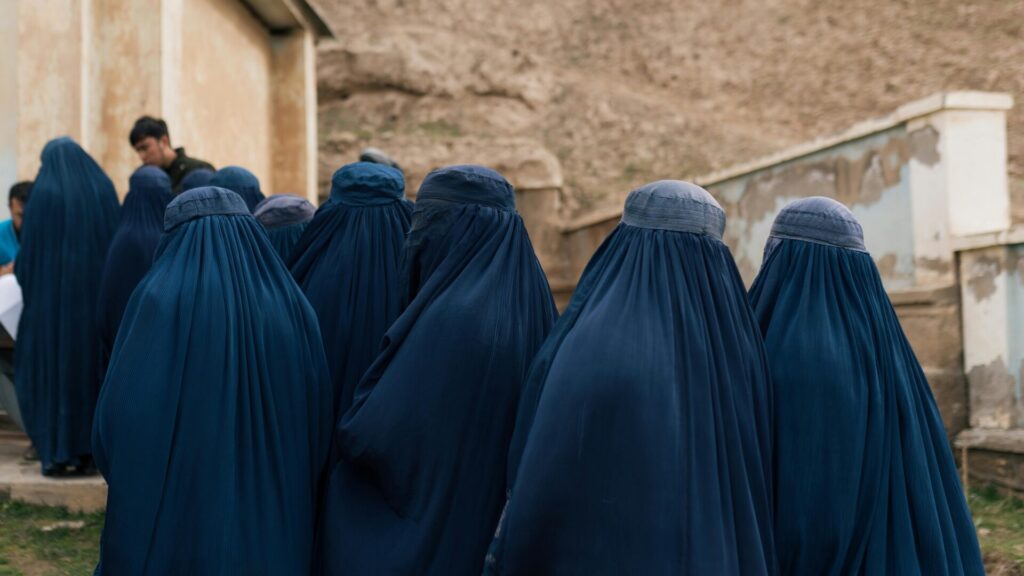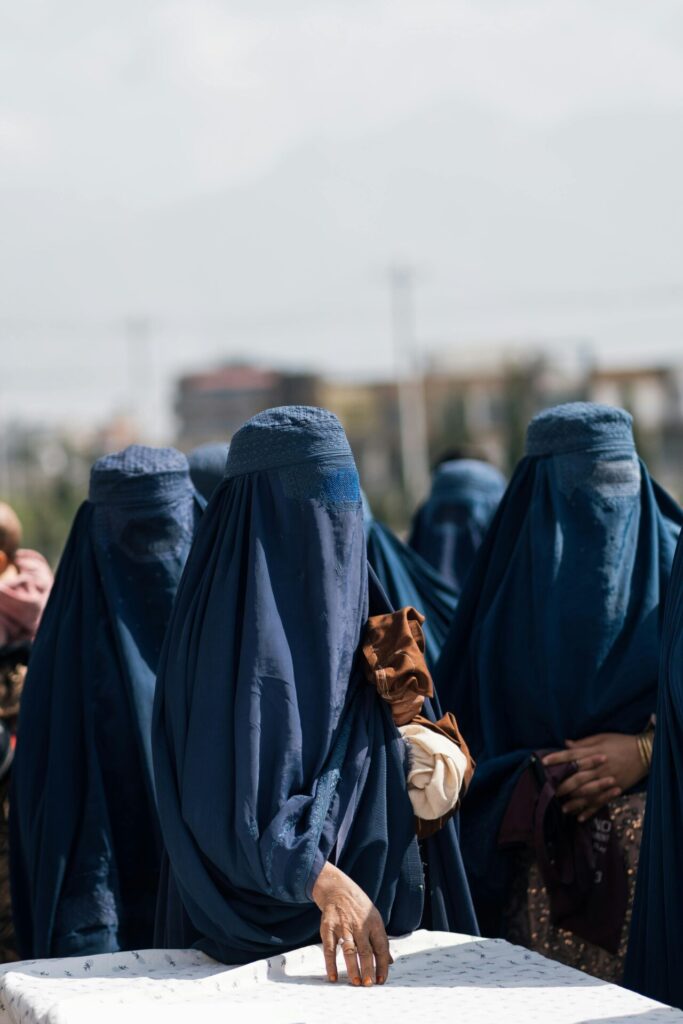The turbulent situation in Afghanistan has left Afghans suffering from starvation, conflict and terror for decades. After the Taliban regained control of the nation in 2021, the situation for Afghans has deteriorated drastically, particularly for women. Nearly four years after the Taliban were renamed as the de facto governors in 2021, Afghanistan’s women remain among the most silenced and marginalised in the world.
The Taliban has long been notorious for implementing extreme Sharia law, ignoring fundamental human rights and limiting freedom of expression. Despite the Taliban’s initial promise to respect women’s rights while implementing their version of Sharia law, the terror group has continued to issue decrees that ultimately erase women and girls from society. The situation for women and girls in Afghanistan has been described as gender apartheid by human rights organisations and highlighted as a global emergency.
“Since the Taliban took power, I was hiding, and I could not do what I was doing before. There is no future for me and millions of other women and girls,” Shamail Zarei, an Afghan civil society activist, said.

Photo from Pexels
What laws have been implemented by the Taliban?
Under the Taliban, women and girls have been stripped of their basic human rights and excluded from public life. They have been banned from working, showing their skin in public, accessing healthcare delivered by men, public speaking, politics and leaving the house without a male chaperone. Under the strict dress code implemented by the Taliban, women are forced to wear a full-body veil (burqa), covering their eyes, nose and mouth.
In 2021, the Taliban rapidly issued a law that banned women and girls from receiving secondary education. Shortly after, in 2022, the Taliban forbade women from attending university. To this date, the only form of education available to women and girls in Afghanistan is inside one of the madrassas that have been built to teach students a radical interpretation of Islam.
While speaking to V-Day, a global activist movement dedicated to ending violence against all women, Sania*, a 25-year-old Afghan woman living in Kabul, described what life is really like for Afghanistan’s women living under Taliban rule.
“Soon after the Taliban took power in 2021, they banned high school for girls. We already knew then that sooner or later they would close universities as well, because naturally there will be no high school graduates to join the universities,” she said.
“I cannot express how heartbreaking and painful it was. I am still traumatised from the day I went to the university, and they did not allow us to enter,” the 25-year-old added. “They took our only source of happiness and peace during these horrific times.”

Photo from Pexels
“There is nothing left for girls to do, no recreational activities, sports, they have closed female gyms, or socialising with friends outside,” Sania explained. “They have all been banned.”
As well as a block on education, due to the law that keeps women from leaving their house without a male chaperone, many women have lost their jobs. These movement restrictions have only pushed families deeper into poverty, leading to an increase in forced marriages and food insecurity.
The Ministry of Women’s Affairs has been abolished, safe houses for survivors of gender-based violence and sexual assault have been closed, and women’s rights organisations often work undercover. While women have reported several counts of rape and sexual violence, the Law on the Elimination of Violence against Women (EVAW) has become futile under the de-facto Afghan government.
In August 2024, the Taliban enforced a frightening law that banned women from speaking in public. In some parts of Afghanistan, women have essentially been imprisoned in their homes. In Kabul, the Taliban ordered households to cover their first-floor and ground-floor windows so women inside their homes could not be seen from the street, Amnesty International reported.
What is being done to address the situation?
As the alarming situation is only getting worse, activists have blamed the international community for continuing to fail women and girls in the region. While women’s rights activists continue their fight overseas, protesters rejecting the gender apartheid in Afghanistan have been threatened, arrested and tortured. Like several other protesters, MP Mursal Nabizada was killed for being involved in a women’s rights demonstration that took place almost immediately after the Taliban took control in August 2021.
“They have carried out public flogging and executions in many parts of Afghanistan. Videos of musicians being beaten and humiliated went viral several times,” Sania said, adding that Afghans feel imprisoned and suffocated.
“However, all this is still not my worst nightmare,” the 25-year-old continued. “My worst nightmare is when the Taliban reach a deal with their foreign masters and decide to open schools, universities and allow women to work. Then these brutes will become ‘progressive’ and ‘modern’ and will continue their tyrannical rule with the full support of the world.”
“We do not deserve to be ruled by criminals and terrorists who have killed thousands of our men, women and children and attacked education centres and hospitals.”
Globally, almost 11 million Afghans have fled the region, most seeking refuge in neighbouring Pakistan. In Pakistan, Afghans are currently facing arrests and deportation threats. Accessing healthcare, education, and legal protection is also difficult for Afghan refugees in Pakistan. Despite fleeing the gender apartheid in Afghanistan, women and girls have reported gender discrimination when trying to enrol in schools in Pakistan.

As the Afghan community continues its ongoing struggle with almost four years of human rights violations and crimes, the international community has imposed sanctions on Afghanistan. For more than two decades, the United States, the United Kingdom and the European Union have continued to uphold sanctions against the nation.
This year, the World Bank reported that economic recovery under the de facto authorities in Afghanistan remains precarious due to financial isolation and reduced foreign aid. Fragile relationships with neighbouring Pakistan and political uncertainty have also proved to be persistent economic challenges for the Taliban.
In 2025, Afghanistan is suffering from one of the largest humanitarian crises and gender apartheid in the world. While the US has remained the nation’s largest aid donor, providing $3.63 billion in assistance, Trump’s America First policies could undoubtedly deepen the already catastrophic situation.
“The Afghan people, and especially their women, are on their own,” Sania said. “We are more alone than ever.”
*Name has been changed to protect anonymity












